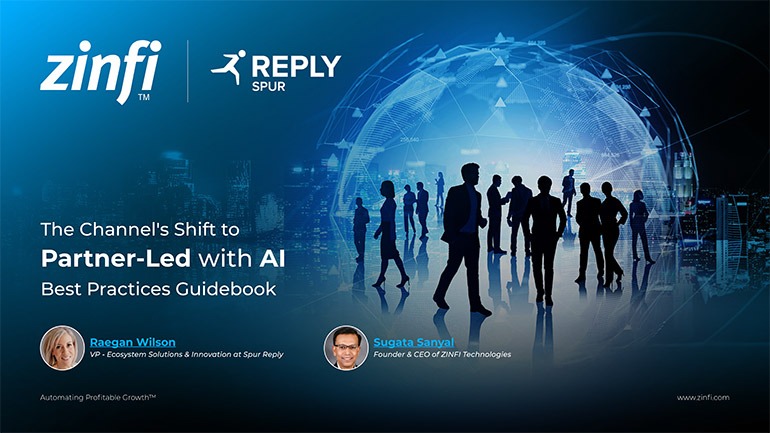Best Practices Articles

What is the Meaning of Partner Sales Enablement?
Over the past couple of decades, two major channel management automation platforms have attracted widespread attention: partner relationship management (PRM) automation and partner marketing management (PMM) automation. However, the most important area in channel automation—an area that has been neglected and remains a major opportunity—is partner sales enablement or partner sales management. If you are considering an investment in channel automation, you should look at partner sales enablement automation first. Why? It’s simple: If you can make your current reseller even 10% more productive (selling more at the same channel investment rate), the result will be a huge impact on both your top and bottom lines—and it can happen almost instantly.
Before we delve into the details, let’s very briefly discuss partner sales enablement and how you can make this happen, either through the infrastructure you have today or by investing in a partner sales enablement automation platform. Partner sales enablement has two core points of focus: 1) contextual sales training and enablement (i.e., during the selling process), which leverages the relative wealth of sales resources vs. technical or marketing resources; and 2) buyer engagement tracking and measurement to assess how the end buyer is engaged in the sales process.
In addition to this two core areas of focus, your partner sales enablement program or platform should have other core capabilities such as a content management system (CMS) for you to upload and set up training materials, sales slicks, price lists, battle cards and other tools. But in the end, the primary focus of partner sales enablement is driving sales productivity by using all of the content and resources you have today, making those resources available when the sales rep needs it, and gaining insight into the interaction and engagement with the end buyer. Why does all of this matter? Because of the following reasons:
- Sales people are overwhelmed. Most sales people have to deal with half a dozen product lines, if not more. With the rate of changes that are happening in the market place, it is almost impossible for them to be fully conversant with every product or service they are selling.
- All sales people are not created equal. While many great sales people are highly organized and can absorb a lot of complex content, they are not all equally capable. Therefore, making relevant content available for them to learn from as a part of the sales process reduces the overload. It also makes them better learners in the long run.
- Sales people should be treated as consumers of content. Product marketing tends to create volumes of materials and content, but organizations rarely understand what is actually effective or not. When they have a system that allows content delivery in stages, as well as precise tracking of consumption patterns, product marketers can become much more effective in creating useful content
- Sales people should be able to track engagement. It is not unusual in the B2B selling process for buyers to disappear, leaving sales people wondering whether they did something wrong or whether the buyer simply lost interest. Disappearing buyers are not necessarily a reflection of the inability of a sales person to make the buyer confident. B2B selling is complex, and at times the decision process halts or slows down internally due to a variety of reasons. That’s why it’s so important for the sales person to be able to track interactions and outcomes in detail and gain a more systematic and nuanced understanding of what’s working and what isn’t.
- Selling is a competitive sport. An effective partner sales enablement platform can offer leader boards, gamification, rewards alignment, and other motivators to create a highly competitive—yet sharing—environment. Gone are the days where sales people are expected to smile, dial and close. Today most B2B sales people are assumed to be sales or solution consultants, roles that requires deeper knowledge of the customer’s environment. This is where cross-learning and sharing are critical.
Partner sales enablement automation can be a big help in establishing a distributed sales team that connects, collaborates and communicates to become more effective. It can also create a highly competitive and transparent selling environment, and encourage increased sharing among reps and teams. The great news is there are multiple tools available for direct sales teams, and new partner sales enablement automation solutions are being offered by several companies—including ZINFI.
A typical deployment cycle for partner sales enablement typically takes two to three months. It takes about a month or so to organize content that is already available and tag it by sales stage and by product line. Once the content has been organized, the next step is training the sales team and making them aware of how to use the existing content and tools to track buyers’ engagement. Once these two steps have been completed, a partner sales enablement platform is ready for rollout and can start producing results.
Best Practices Guidebook
 Modernizing Channel Marketing: AI and Ecosystem Enablement Best Practices
Modernizing Channel Marketing: AI and Ecosystem Enablement Best PracticesDownload for FREE
 The Channel’s Shift to Partner-Led With AI Best Practices
The Channel’s Shift to Partner-Led With AI Best PracticesDownload for FREE
 Hyperscalers, ISVs, and AI: Shaping the Future of B2B Software Distribution
Hyperscalers, ISVs, and AI: Shaping the Future of B2B Software DistributionDownload for FREE
 Definitive Guide to a Partner Ecosystem-First Sales Strategy
Definitive Guide to a Partner Ecosystem-First Sales StrategyDownload for FREE
 The Partner-Led Digital and AI Transformation Best Practices
The Partner-Led Digital and AI Transformation Best PracticesDownload for FREE
 Startup Talent Recruitment: Hiring Missionaries, Not Mercenaries
Startup Talent Recruitment: Hiring Missionaries, Not MercenariesDownload for FREE
 The Future of Partner Relationship Management with AI in Partnerships
The Future of Partner Relationship Management with AI in PartnershipsDownload for FREE
 Cybersecurity for the 99%: Strategies from the Frontline
Cybersecurity for the 99%: Strategies from the FrontlineDownload for FREE
 Mastering Partner Relationships: A Strategic Approach to Business Growth
Mastering Partner Relationships: A Strategic Approach to Business GrowthDownload for FREE
 Mastering Partner Relationship Management: Keys to SaaS Channel Success
Mastering Partner Relationship Management: Keys to SaaS Channel SuccessDownload for FREE
 Navigating the AI Revolution: Guide for Partners in the Microsoft Ecosystem
Navigating the AI Revolution: Guide for Partners in the Microsoft EcosystemDownload for FREE
 Mastering the Modern Buyers Journey: Sales Leader’s Guide to AI & Engagement
Mastering the Modern Buyers Journey: Sales Leader’s Guide to AI & EngagementDownload for FREE










